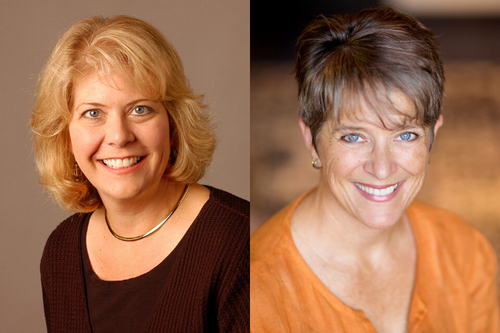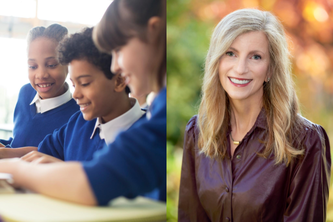
December 2 is Special Education Day. In 1975, Congress mandated schools provide special education programs. It wasn't until 2001, however, that all students were required to be assessed — using a set of federally mandated standardized tests — on their knowledge of common core curriculum in English, language arts and mathematics.
Inclusive education provides all students, regardless of any learning difficulties, access to age-appropriate general education classes and the instruction, intervention and support to meet core standards.
University of Minnesota experts Kathy Seifert, a senior lecturer in the special education program, and Cynthia Zwicky, a lecturer in the elementary education program, train teachers working in special education and general education settings. Both are available to comment on how special education teachers, general education teachers, school support staff and parents can work together to provide inclusive classrooms settings that benefit all students.
Kathy Seifert, Ph.D., Department of Education Psychology
“Special education teachers are trained primarily as academic and behavioral interventionists. Therefore, many don’t have the subject matter expertise of, say, a math teacher. Inclusive education protects the civil rights of students with disabilities by ensuring — since all students are assessed by the same common core curriculum standards — they receive the content instruction they need to meet these standards.
“Multi-tiered systems of support is a model that helps teachers and other school support staff identify students who are at risk for educational difficulties from both an academic and behavioral standpoint. General education teachers serve as the first line of defense.
“In inclusive classrooms, students with learning, behavioral, or social/emotional difficulties participate in general education classrooms alongside their peers. Sometimes a special education teacher will teach alongside a general education teacher. Other times, students may be in a general education classroom for most of (or part of) the day but may require more specialized support in another setting such as a resource room.
“Teachers in inclusive classrooms use a variety of teaching methods to build flexibility into their curriculum. Offering more than one way to learn and demonstrate a concept helps all students, not just those with difficulties, learn in a way best suited to their academic strengths.”
Contact information:
Sarah Jergenson
[email protected]
Cynthia Zwicky, Ph.D., Department of Curriculum and Instruction
“When students are part of an inclusive classroom, they all benefit, regardless of ability. This is because differentiating instruction, a student-centered instructional approach that makes learning accessible, provides more student choice and increases engagement for all children. There are multiple ways to learn and understand a topic (e,g, movement, song, literature). Understanding this, and then offering students multiple ways to engage with a subject, helps students thrive.
“We live in an inclusive society. We don’t live in a place where, as adults, we are separated out by reading levels or math ability, so it makes sense to structure classrooms to model the society we live in. One of the key outcomes of inclusive education is helping students to be more empathetic and compassionate to others. Fostering, at a young age, an understanding that there are many ways to learn and engage in schools truly benefits us all.
“Training teachers to provide inclusive environments is key to the success of students. The U of M has a unique teacher training program, requiring elementary education students to take a practicum in special education. They spend a semester in a special education class or a general education inclusive classroom while taking courses in special education and classroom management. This ensures teachers are trained with strong foundational knowledge of how to best reach all learners regardless of abilities and learning styles.”
Contact information:
Kat Silverstein
[email protected]
About University of Minnesota experts:
University of Minnesota experts can provide commentary, insights and opinions on various news topics. See selected experts on U of M’s Experts Guide or inquire about additional experts via email at [email protected].
Media note:
The University of Minnesota Twin Cities is equipped with a VideoLink ReadyCam® studio for live or taped HD television interviews with our experts. To arrange an interview, contact the University Public Relations Office at (612) 624-5551 or [email protected].
- Categories:
- Education





